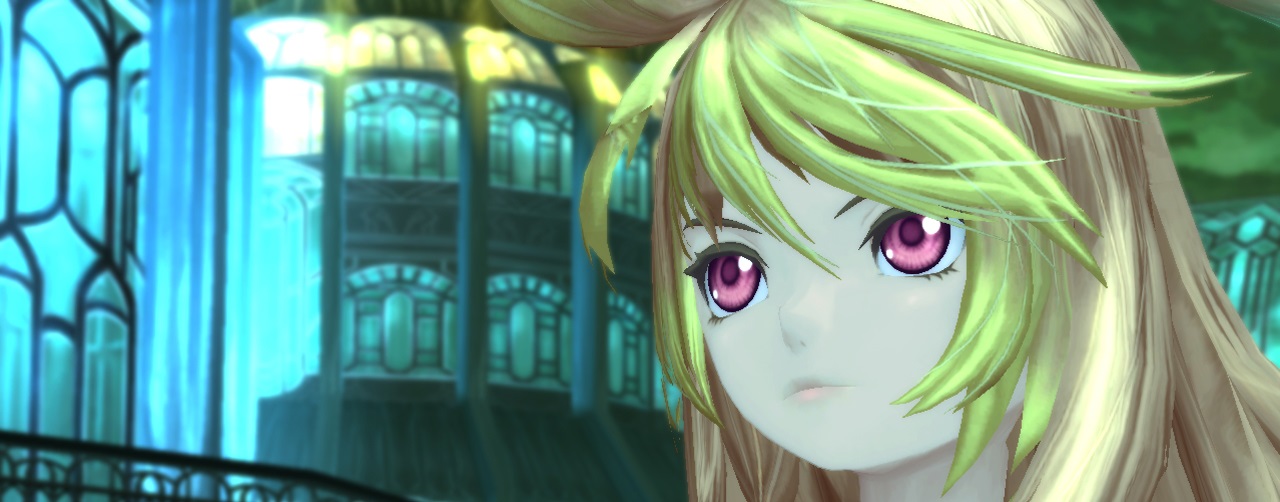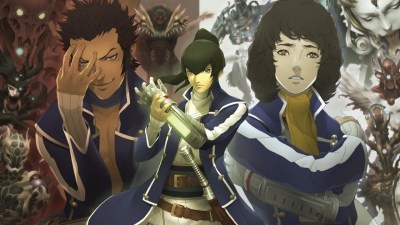The Tales series is beloved in the JRPG world, spanning almost twenty years and fifteen games. They’re known for their engaging stories and vibrant worlds, and Tales of Xillia lives up to this standard.
Tales of Xillia is the first game in the series that lets you choose between two main characters. You can either be Jude Mathis, a virtuous medical student, or Milla Maxwell, the headstrong Lord of Spirits. Your journey takes you across the vast world of Rieza Maxia, a world where humans and spirits live in harmony, as you try to recover the four Great Spirits while being pursued by government officials. Like most good RPGs, the story starts small and grows bigger with each plot twist, building to a satisfying conflict that holds the fate of the entire world in the balance.
The main story takes about 40-50 hours to complete, and a good sense of pacing keeps things interesting throughout. There are numerous twists and red herrings which propel the action along as you struggle with completing your mission while never knowing who’s really on your side and whether you’re fighting for the right reasons. The whole plot has an environmental undertone of the relationship between humans and spirits, and how overusing spirits is leading to their disappearance from the world.
Some JRPGs contain so many side-quests that it can begin to feel like a chore to complete them. Thankfully, Xillia’s side-quests are sparse and often contain interesting scenes that inform on the characters or story in some way. However, it would have been nice if they were more complex than simple fetch and hunt quests. There’s also a coliseum mode, where you can fight either solo or as a team against a slew of opponents. The coliseum can be very challenging early in the game, but there aren’t enough tournaments and the prizes aren’t significant enough for it to be that dynamic of an addition.
Each member of your party has a personal reason for joining your cause; whether it’s the ex-military leader searching for redemption, or the young girl trying to piece her memories together. Outside of a few flat moments, they are all pretty well-written. Their personalities really come through during the numerous viewable ‘skits’ throughout the game. These are mini cut scenes where the party talks about what’s going on in their journey. Most of them are quite funny. But if it’s not your thing, you don’t have to watch any of them.
The battle system is one of Xillia’s biggest strengths. The fights are real time, but you can pause to check out enemy info, or change your equipment and AI strategies. Combat is fast-paced and requires decent reflexes. You’ll want to block and dodge enemy attacks, as simply taking them head-on is a quick way to find yourself at the game over screen. The fights can be hard, but never punishing. If you lose to a boss, you’ll get the option to change your equipment and add boosts to your party before retrying the battle , instead of having to start over on the title screen.
In addition, you can customize the behavior of the AI - for example, setting one party member to prioritize healing, and another to only attack enemies with low health. It’s nowhere near as nuanced as the Gambit system from Final Fantasy XII, but it does take some of the pressure away from having to worry about an AI behaving stupidly and costing you your life.
The most interesting part of the battle system is the ability to link your special attacks, called “Artes”, with other characters to perform stronger Linked Artes. Like in Chrono Trigger, each character has different linked artes depending on who they are linked with, and you can change linked partners on the fly. While you’re attacking, your link meter fills up. When it’s full, you can attack by chaining several linked artes together, and can even unleash a powerful finishing move later in the game. It’s incredibly satisfying to rapidly switch between partners and perfectly execute several linked artes to devastate your opponents. And if you get bored playing with Jude or Milla, you can control any of the other members of your party in battle, each with their own fighting style and set of moves.
The leveling system is simple and easy-to-use. With each new level you get GP which you can spend in the Lithium Orb Matrix (similar to the Sphere Grid from Final Fantasy X). You can choose if you want to spend your hard-earned points on stats like strength or defense, or on a new arte or support skill.
The shop system is inventive because it gives you an incentive to grind. Every shop in the game carries the same equipment. The way to access stronger items and equipment is to upgrade the shops with loot you find from defeating enemies. The stronger the enemies, the better loot they drop, which is worth more upgrade points. Technically, you could toil forever in the first area and be able to buy level 100 equipment (but why would you?) You can also buy food at the shops which grants you temporary boosts such as increased defense or money drops. The one drawback about this system is that the game is missing that sense of excitement of arriving at a new town and checking what new items their shops have in stock.
Visually, the game isn’t on the bleeding edge of realism, but instead presents a colorful aesthetic that’s gorgeous to look at. Some of the longer cut scenes are rendered as anime scenes, and are a lot of fun.
The biggest drawback is the lack of post-game content compared to other games in the genre. You can hunt down the special bosses and explore the extra areas pretty quickly, and the final secret boss isn’t as challenging as some of the other bosses in the game.
There is a new game plus option, which is actually be worth playing. You can choose to play as the other character, and although the majority of the story is the same - except for the few parts where Jude and Milla are apart - the differences in perspective on events can be interesting. New game plus allows you to carry over items, moves and stats, as well as buffs for a second playthrough, including earning double the money and experience from battles.
Xillia is an excellent addition to the Tales series. Despite the side-quests and post-game content being underwhelming, it tells a compelling story with a great cast of characters and a fun battle system. The towns and shopping system are not exactly the most compelling in the series, but the vivid landscapes and dungeons more than make up for it.


